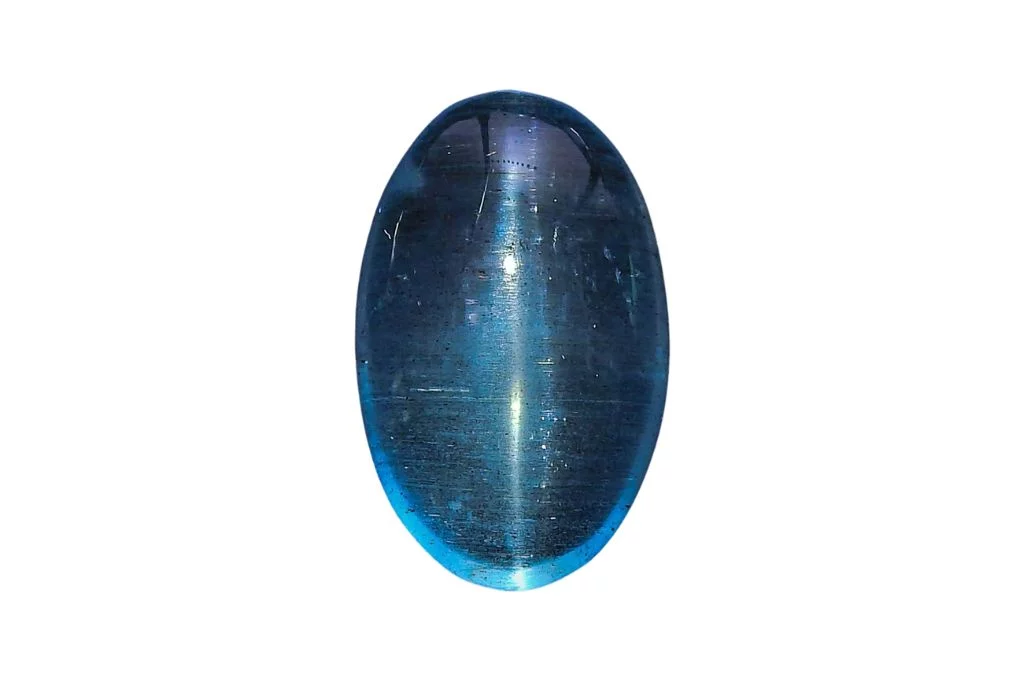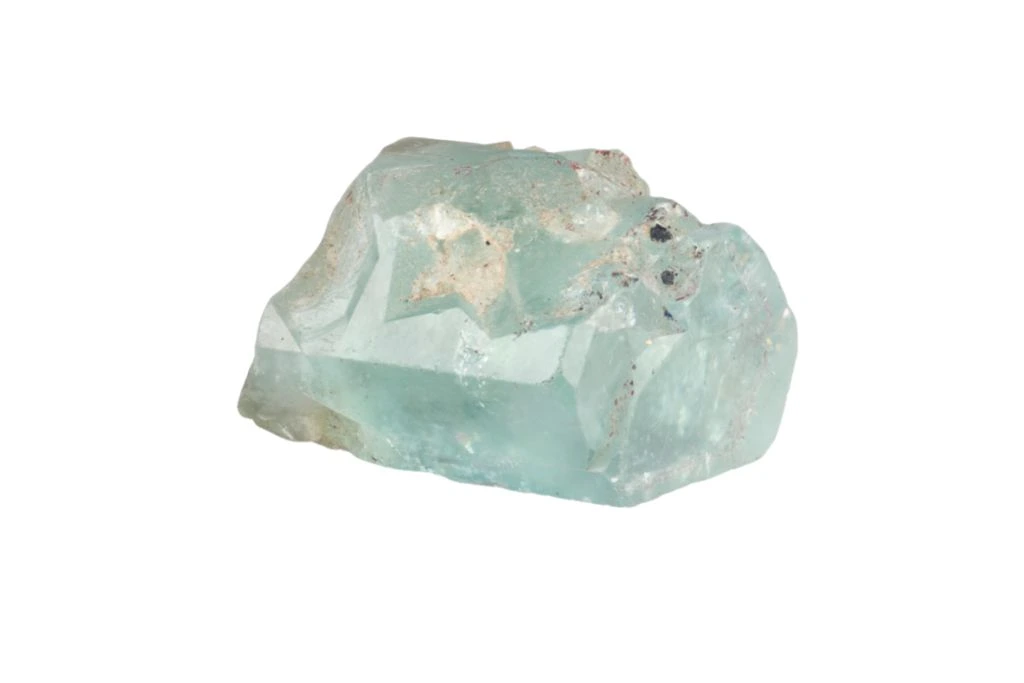Color and Transparency
Aquamarine, a variety of the mineral beryl, is renowned for its stunning blue to blue-green hues. The color range typically spans from pale sky blue to deep sea blue, with some specimens exhibiting a slight greenish tint. The intensity of its color can vary, with more saturated blues being highly prized. One of the most striking features of aquamarine is its exceptional clarity and transparency, allowing light to pass through the crystal with minimal obstruction.
Crystal Structure
Aquamarine forms in a hexagonal crystal system, often developing into long, prismatic crystals. These crystals can grow to impressive sizes, with some specimens reaching several inches in length. The hexagonal structure is evident in the cross-section of well-formed crystals, displaying a distinctive six-sided shape. This geometric regularity contributes to aquamarine’s appeal in both its natural and cut forms.
Physical Characteristics
With a hardness of 7.5 to 8 on the Mohs scale, aquamarine is a durable gemstone suitable for everyday wear. It exhibits a vitreous luster, giving it a glass-like shine when polished. Another notable characteristic is its pleochroism, meaning it can display different colors when viewed from different angles. This property is particularly evident in larger crystals, adding depth and complexity to its appearance.
Unique Features
One of aquamarine’s most distinctive features is its ability to retain its color under artificial light, unlike some other blue gemstones. It also possesses excellent clarity, often free from inclusions visible to the naked eye. Some specimens may contain needle-like inclusions that, when properly oriented, can produce a cat’s eye effect known as chatoyancy. This rare phenomenon adds to the gemstone’s allure and value among collectors and enthusiasts.
Historical and Cultural Significance of Aquamarine
Aquamarine has been revered for centuries across various cultures. Ancient Romans believed it could cure ailments of the stomach, liver, and throat. Sailors often carried aquamarine as a talisman for safe voyages and protection against seasickness. In medieval times, it was thought to reignite love between married couples.
Metaphysical Associations
Aquamarine is strongly associated with the throat chakra, enhancing communication and self-expression. It is believed to promote inner peace, clarity, and emotional balance. Many consider it a stone of courage, helping to overcome fears and phobias. Additionally, aquamarine is thought to strengthen intuition and psychic abilities.
Common Uses and Applications
In modern times, aquamarine is primarily used in jewelry, prized for its serene blue color and durability. It is the birthstone for March and the gemstone for the 19th wedding anniversary. In crystal healing practices, aquamarine is often used in meditation, placed on the throat or heart chakras. Some people carry aquamarine as a worry stone or place it in their living spaces to promote a calm atmosphere.
Benefits and Properties
Aquamarine is believed to have numerous benefits, including reducing stress and anxiety, improving mental clarity, and enhancing overall well-being. It is said to aid in respiratory issues and allergies. In relationships, aquamarine is thought to foster understanding and open communication. Some practitioners use it to purify and cleanse negative energy from other crystals or environments.


